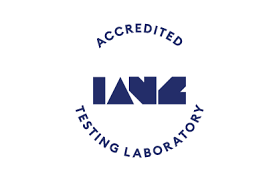PFAS
PFAs Analysis in Waters
What are PFAS? Perfluoro-alkyl and polyfluoro-alkyl substances (PFAS) are a family of thousands of synthetic fluorinated organic compounds with multiple C-F bonds. The C-F bond is the shortest and strongest bond in nature, and is responsible for most of the functional characteristics of these compounds.
PFAS have been used in diverse ways for more than 50 years to make products non-stick, water-repellant, and resistant to fire and climatic conditions. They are persistent in the environment and resistant to normal degradation, meaning that PFAS residues are commonly found in soil, sediments, environmental water, and biota. They are considered to have potential adverse effects on environmental and human health.
The best known PFAS compounds are perfluorooctane sulfonate (PFOS), perfluorohexane sulfonate (PFHxS), and perfluorooctanoic acid (PFOA). There are environmental guidelines for PFOS, PFHxS, and PFOA set by the Heads of EPAs Australia and New Zealand (HEPA) in the “PFAS National Environmental Management Plan” (January 2018).
Analytica’s PFAS method is validated for the determination of 31 PFASs (or 35 compounds if we include mono-branched and di-branched PFHxS and PFOS) in drinking water, fresh water, and waste water. The method may also be applied to soda or sulphur spring water or sea water subject to performance verification. The compounds analysed and their reporting limits (RL) are listed in Table 1 back page of our PFAS in Ground, Surface, & Saline Waters Technical Note.
In Analytica’s method, water samples are prepared using SPE (solid phase extraction), and analysed using LC-MS/MS. The method is based on EPA method 537 (2009), ISO 25101 (2009), and another 2005 published paper on analysis of perfluorinated acid in water and biota. References are available on request.
Method uncertainty is estimated to be approximately 25%.
Quality Control
Our special purpose triplicate container design addresses common contamination issues with PFAS testing through extraction of the entire container.
Each batch of analysed samples will incorporate a range of laboratory QC samples including:
- A blank (Type 1 water)
- Low and high spke samples into Type 1 water
- A sample duplicate
- Low and high spikes into sample duplicates
Samplers are encouraged to consider which QC samples should be collected during the sampling process - we are happy to discuss this further on request.




